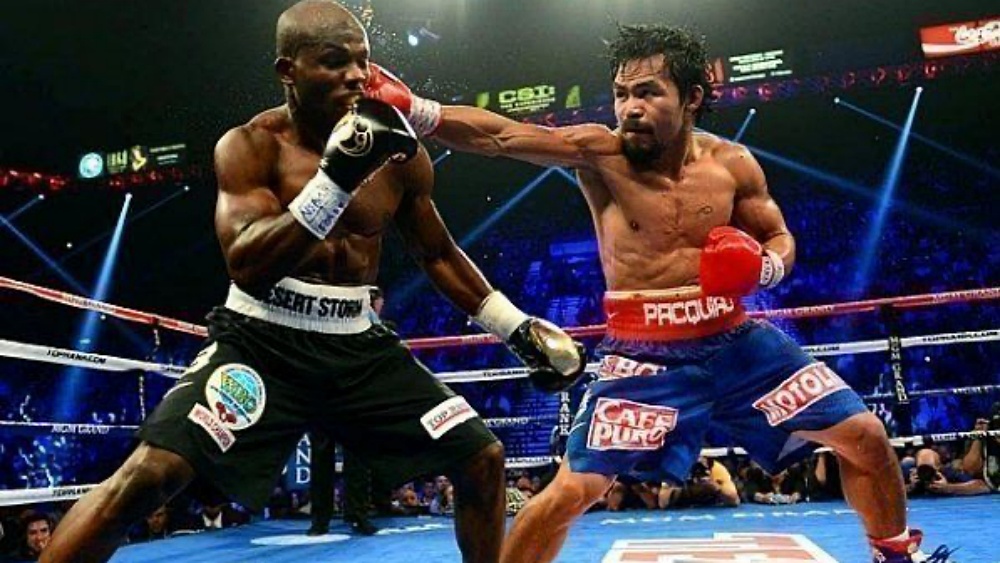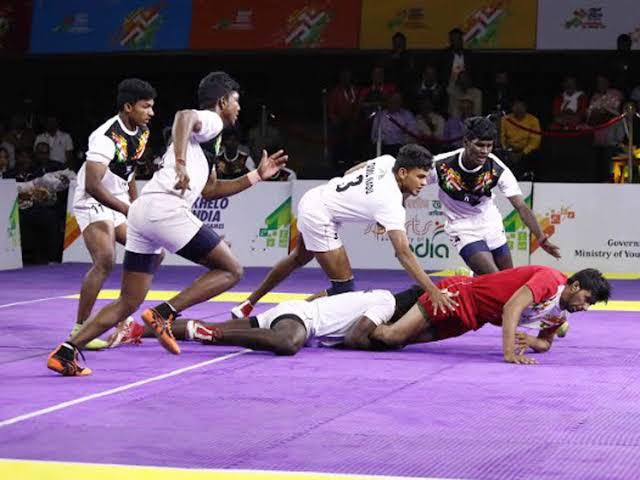
In combat sports, the way a fighter stands can change everything about how a match unfolds. Stance determines balance, power, and angles of attack. Among the many stances, the southpaw stance is often described as tricky, elusive, or difficult to deal with. It is a mirror image of the orthodox stance, and because most fighters train to face orthodox opponents, the southpaw creates an immediate sense of discomfort. For decades, southpaws have shaped the history of Boxing, Muay Thai, and MMA, leaving a legacy of legends who mastered its unique advantages. Today, let’s dive deeper into the intricacies of the southpaw stance and how you can utilize it for your own discipline.
What Is The Southpaw Stance?
Let’s define what is a ‘southpaw’ first. The southpaw stance is defined by having the right foot and right hand forward with the left foot and left hand at the rear. This makes the left hand the primary power weapon, while the right hand and lead right foot control range and set up attacks. It is the opposite of the orthodox stance, where the left side leads.
The term “southpaw” has roots outside of combat sports, but in the ring it has become a marker of unpredictability. While left-handed fighters naturally adopt this stance, many right-handed fighters have also learned it strategically, using it as a tool to confuse opponents and create new openings.
What makes the southpaw so distinct is not just the mirrored positioning but how it reshapes the geometry of fighting. Angles of punches, kicks, and footwork are all reversed, forcing opponents to adjust their timing and instincts. A simple jab now comes from an unexpected direction, while a rear left strike cuts straight into the centerline of an orthodox fighter’s guard.
Southpaw In Boxing
In boxing, the southpaw stance has produced some of the sport’s most iconic figures. Fighters like Manny Pacquiao, Pernell Whitaker, and Marvin Hagler showcased how disruptive the stance can be when mastered. Because the majority of boxers train against orthodox fighters, the sudden switch in angles often give southpaws a built-in advantage.
The most famous weapon of the stance in boxing is the straight left hand. Against an orthodox opponent, it fires directly into the opening created by their stance, bypassing their lead shoulder and often beating their jab to the mark. The lead right hook also becomes a sneaky weapon, curving around an opponent’s guard when they least expect it. Southpaws excel at circling to their right, moving away from the orthodox fighter’s power hand while creating a clear path for their own.
But being a southpaw is not without its challenges. The open stance battle means orthodox fighters are constantly looking to land their own rear cross. Foot positioning becomes a duel in itself, with both fighters trying to place their lead foot outside the other’s to line up attacks. This constant battle of angles is what makes southpaw vs orthodox matchups some of the most intriguing in boxing history.
Southpaw In Muay Thai
The southpaw stance in Muay Thai opens a different world of opportunities, because the art is not limited to fists. The most notorious weapon from this stance is the rear left body kick. Against an orthodox opponent, this kick slams into the open side of their torso, punishing the ribs and arms with devastating impact. Over the course of a fight, repeated left kicks not only score points but also sap an opponent’s stamina.
Elbows and knees also take on new dimensions in southpaw. From the clinch, the stance provides unusual angles to lock control and fire knees upward into the body. Elbows come in sharper from the lead right side, surprising opponents who are more used to defending from the left.
Thai legends such as Saenchai have demonstrated how southpaw can be used not just for power but for artistry. By switching between orthodox and southpaw seamlessly, he baffled opponents, landing strikes from directions they did not anticipate. In modern Muay Thai, being able to fight southpaw is considered an essential skill for high-level fighters.
Still, the stance comes with vulnerabilities. The orthodox right body kick, aimed at the southpaw’s open side, is a constant threat. Southpaw nak muays must train to check kicks and counter quickly to avoid being overwhelmed.
Southpaw In MMA
In mixed martial arts, the southpaw stance gains even more layers of depth. Strikes, takedowns, and grappling all play into how the stance is used. The left cross remains a powerful weapon, often setting up knockouts with precision timing. The left kick to the body or head is equally dangerous, especially when combined with feints.
Being a southpaw in MMA is not just about striking. It also changes how takedowns are attempted and defended. A southpaw fighter can shoot double legs or single legs from angles that orthodox fighters rarely encounter, giving them a split-second advantage. The stance also opens up cage control, allowing fighters to pressure from their strong side while limiting an opponent’s options to circle out.
Fighters like Conor McGregor, Nate Diaz, and Anderson Silva have used southpaw striking to carve their names into MMA history. McGregor’s timing on the left cross, in particular, became legendary, dropping opponents repeatedly with a strike that seemed impossible to avoid.
Modern MMA places a premium on adaptability. Many fighters now switch between orthodox and southpaw mid-fight, a tactic known as stance switching. This constant adjustment keeps opponents guessing, but the roots of this tactic lie in the southpaw’s ability to disrupt rhythm and create new lines of attack.
Strengths And Weaknesses Of Southpaw
The southpaw stance thrives on angles and surprise. Its greatest strength is its rarity. Because most fighters grow up sparring against orthodox opponents, the southpaw immediately feels unfamiliar. The stance opens direct lines for the left hand and left kick, and it forces opponents into constant adjustments.
However, the stance is not untouchable. Losing the battle of lead foot positioning can expose a southpaw to hard right crosses or body kicks. It also requires strong conditioning to maintain the angles and pressure needed to keep the advantage. Like all stances, its effectiveness depends on the fighter’s discipline and skill, not just its positioning.
Training The Southpaw Stance
Developing comfort in a southpaw requires patience and consistent practice. Footwork drills help build balance while circling to the right, away from the opponent’s power hand. Pad work allows fighters to sharpen their left cross and left body kick, the signature strikes of the stance. Sparring rounds dedicated to southpaw, even for naturally orthodox fighters, build familiarity and remove the sense of awkwardness.
Perhaps the most important element is defensive training. Southpaw fighters must prepare specifically for orthodox weapons aimed at their open side. Drills that focus on blocking, countering, and pivoting away from the right cross or right body kick are essential. With time, these reactions become automatic.
FAQs On The Southpaw Stance
Q: What Does Southpaw Mean?
A: Southpaw refers to a stance where the right foot and hand are forward, and the left side is the rear power side.
Q: Is Southpaw Only For Left-Handed Fighters?
A: No. While many left-handed fighters use it naturally, right-handed fighters can also adopt southpaw for tactical reasons.
Q: Why Is It Harder To Fight A Southpaw?
A: Most fighters are orthodox, so opponents are less accustomed to southpaw timing and angles. This unfamiliarity creates difficulty.
Q: Which Sport Benefits Most From Southpaw?
A: All striking arts gain from it, but boxing and Muay Thai especially highlight the stance’s angles for the left cross and left kick.
Conclusion
The southpaw stance is one of the most influential positions in combat sports. In boxing, it disrupts rhythm and opens devastating straight lefts. In Muay Thai, it unleashes punishing left kicks and clinch angles. In MMA, it provides a complete toolkit of striking and grappling opportunities.
What makes southpaw fascinating is not just the stance itself, but how it forces fighters to adapt. Legends across the sports have proven that mastery of this stance can elevate a fighter from skilled to extraordinary. For those willing to study it, the southpaw stance offers a reminder that sometimes, turning the fight upside down is the surest way to come out on top.
You may also like:
The Best MMA Drills To Improve Technique And Mental Strength
Few things in boxing are as intriguing as an orthodox fighter squaring off against a southpaw. The clash of stances often produces unusual rhythms, unexpected openings, and moments of brilliance. Because most fighters grow up…
Boxing has always been a sport defined by moments. While strategy, endurance, and skill matter, it is often the knockouts that remain etched in history. A perfectly timed punch can shift the course of a…
Boxing fans around the world are still buzzing after Terence “Bud” Crawford pulled off one of the most remarkable victories in modern boxing. Last Saturday, Crawford moved up two weight divisions to defeat Canelo Álvarez,…
In martial arts, improvement does not come only from sparring or drilling techniques. Another powerful tool for growth is watching fight replays. Whether its a professional bout streamed worldwide or a recorded sparring session in…
Boxing is often described as the “sweet science” because of the different styles fighters use inside the ring. Some prefer to brawl up close, relying on raw power and aggression, while others focus on speed,…
Few fighters in boxing history inspire the same awe as Mike Tyson. Exploding onto the scene in the mid-1980s, Tyson became the youngest heavyweight champion at just 20 years old. His ferocious style, head movement,…
Opening the closed guard is one of the most fundamental and often frustrating skills for beginners in Brazilian Jiu-Jitsu. If you’re stuck inside someone’s guard, your movements and offense strategies are completely limited. This article…
In Muay Thai, different fighters develop distinct styles based on their strengths and strategies. Muay Khao refers to the knee-fighting style, one of the most dominant approaches in the sport. A Muay Khao fighter uses…
Children’s martial arts programs are becoming increasingly popular, with many parents seeking activities that do more than just keep their kids active. Martial arts training teaches important values like discipline, confidence, and respect, but one…
Singapore is known worldwide for its fast-paced life. Long work hours, competitive education, and the constant drive for success have given rise to what many call “hustle culture.” While this culture often pushes people to…
Mixed Martial Arts, or MMA, is often seen as the ultimate test of a fighter’s skill. It combines striking, grappling, and strategy into one dynamic sport. But behind every highlight reel knockout or submission win…
Brazilian Jiu-Jitsu, often called BJJ, is filled with techniques that allow a smaller or less powerful practitioner to reverse positions and gain control. Among the most iconic is the flower sweep. For students of all…

































